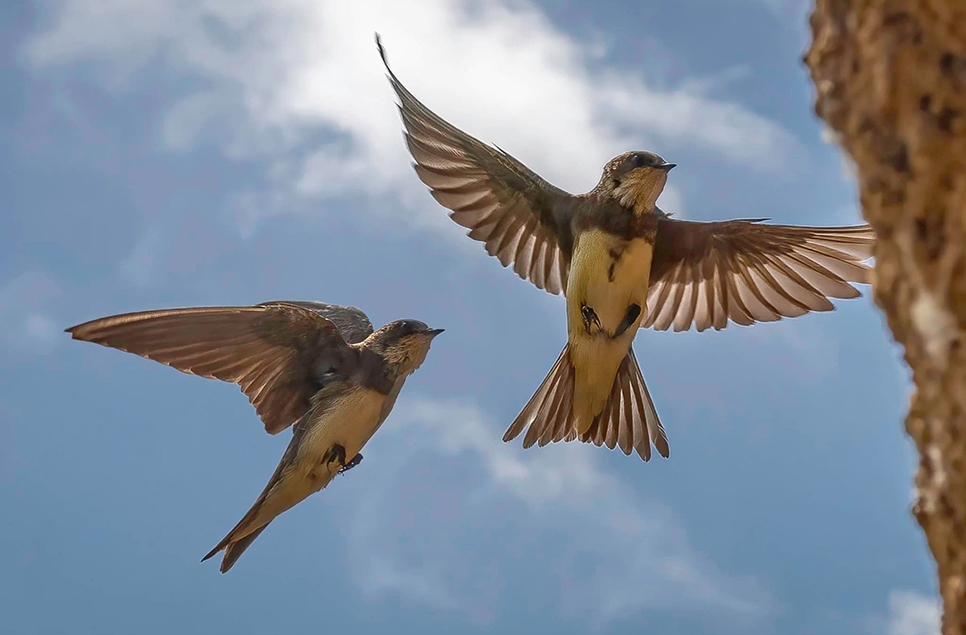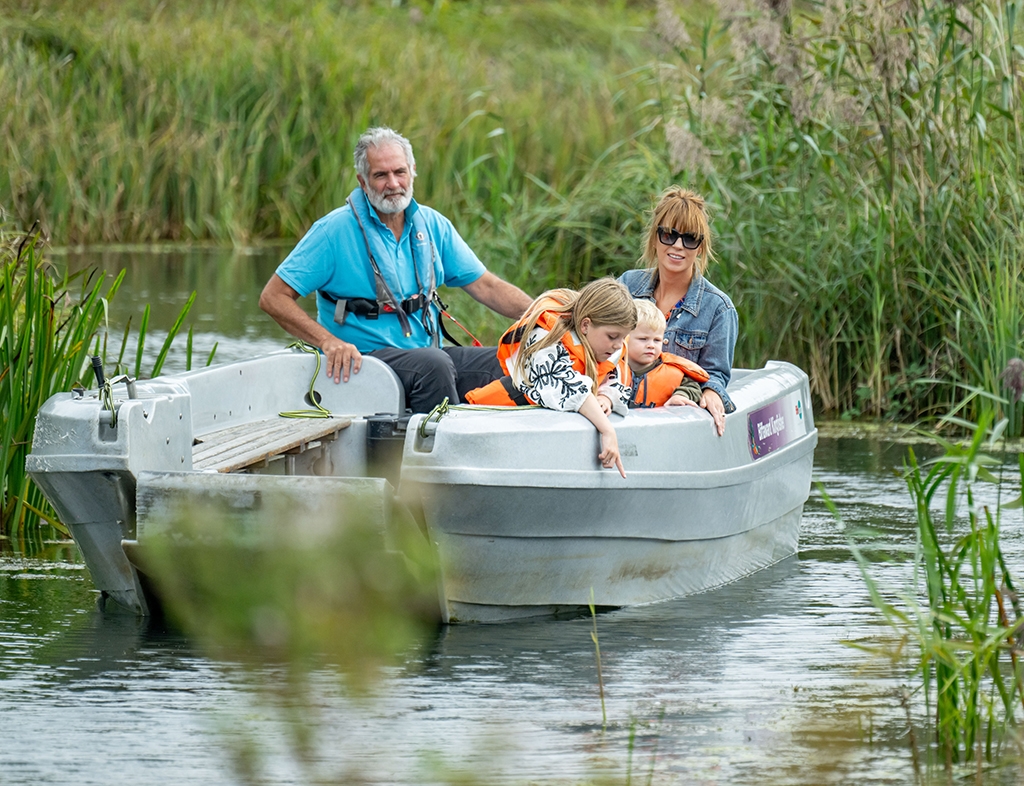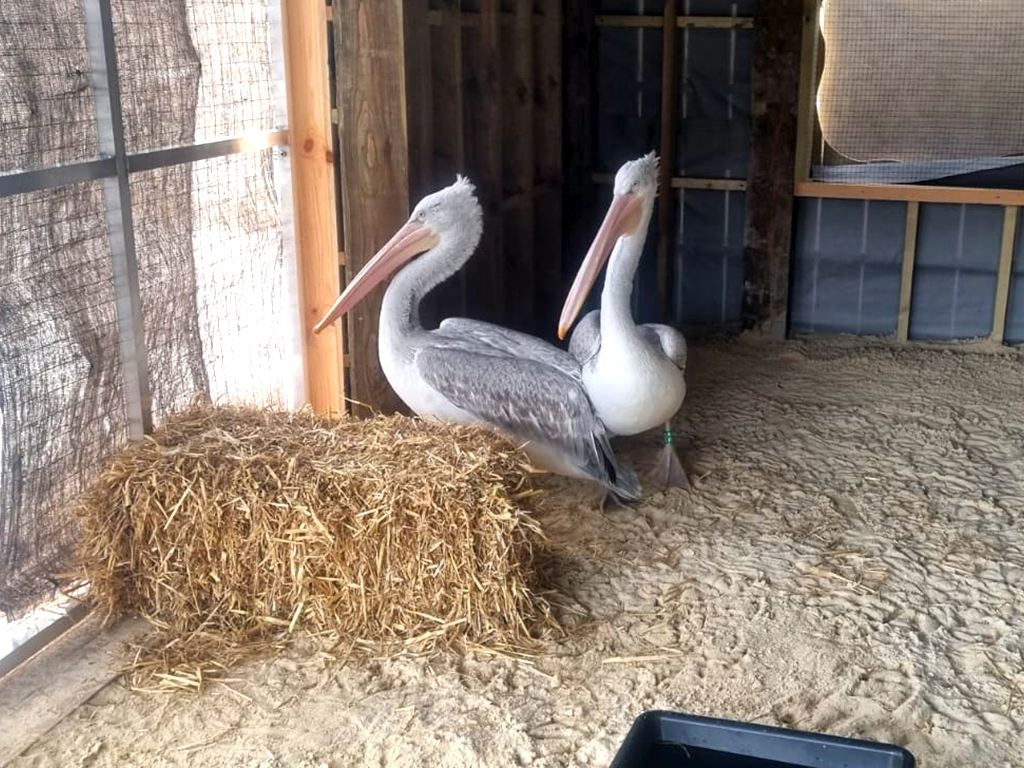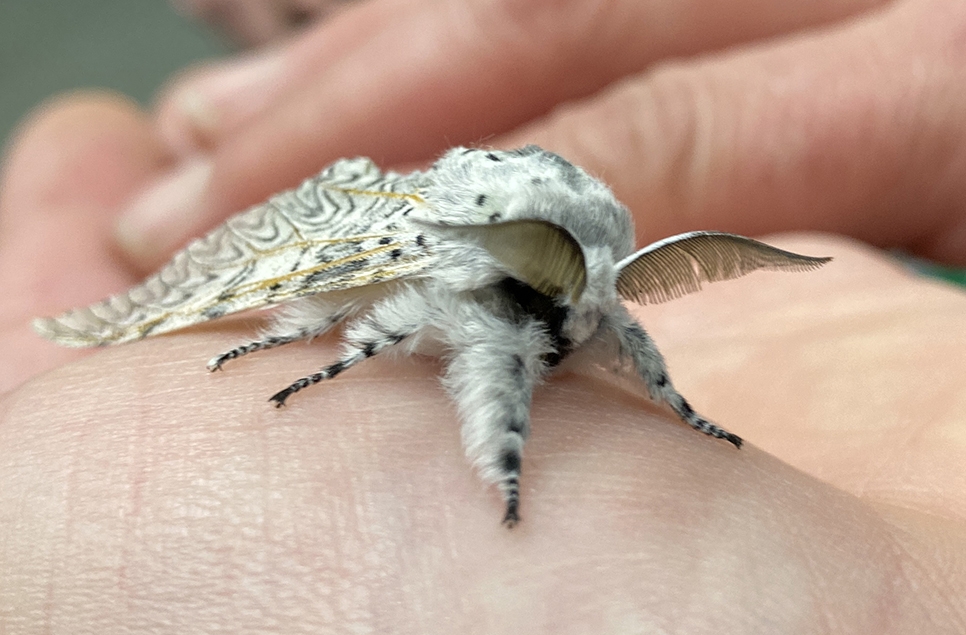Discover a Wild Summer at Arundel
A pallette of wetland wildflowers, dramatic dragonflies and swarms of sand martins are some of the highlights you can experience at Arundel Wetland Centre this summer.
Kingfisher battle royale
Things got really wild when visitor Alec Pelling took these great photos (above) of two male kingfishers having a territorial dispute near the kingfisher nesting bank on Arun Riverlife in late June. One of the fighting males is part of a pair that are using the nesting bank at Arundel Wetland Centre again this year. This pair have already hatched three chicks this season – those fledged juveniles were spotted along the route of the boat Safari in late June. The kingfisher pair have been trying for a second brood in nesting hole #8 so have a look out for them from the Discovery hide this summer.
Summer eclipse
Many ducks and geese are in their annual moult (eclipse). Some go into hiding, tucking themselves away while they grow new flight feathers. Mallards, gadwall, mandarins, along with greylag and Canada geese are all looking particularly tatty at the moment and the piles of feathers left behind can seem a little alarming! Wild pochard and tufted ducks are still with youngsters and as in past years, are raising them successfully on the Pelican Cove exhibit. A female mallard duck “adopted” a clutch of tufted ducklings and helped their tufted duck mother raise them on Pelican Cove in June! You can read more on this story here.
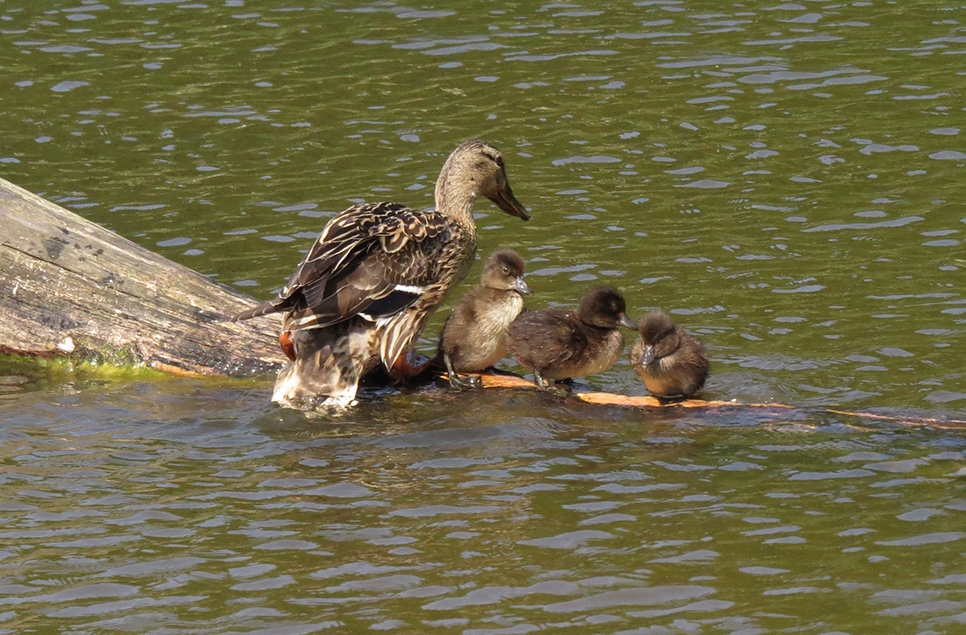
Female mallard co-parented four tufted ducklings at Pelican Cove in June.
Oystercatchers: take 2
The pelicans have also been joined by a pair of oystercatchers who are nesting on one of their islands . The pair's first nest was sadly predated outside Coastal Creek, but they have gone for a second attempt on the Pelican island. We expect the oystercatcher eggs to hatch soon in early July. The pair of oystercatchers at the Sand Martin hide hatched three chicks on the hide roof. The family are now on the cobble island opposite with one surviving chick, running around the rapidly growing vegetation.
Summer is a great time to focus on the amazing biodiversity of the wetlands. In early summer hidden amongst the vibrant, carpet of wildflowers including Bird’s foot trefoil, Common valerian, and Meadowsweet are an abundance of orchids. Common spotted, Southern marsh, Pyramidal and Bee orchids are flowering in various places across the reserve, with a total of 141 spikes of various species counted on a recent survey.
Rare dragonfly emerges again this summer
Dragonflies are now out in force and are a little more tolerant recent winds than butterflies! We have once again spotted Common Club-tailed dragonfly on Wetlands Discovery. Common club-tailed dragonflies are yellow and black when they emerge - that males eventually turn green. Boat driver Simon snapped one on his boat who thinks its found a mate in a piece of boat line! (pic below) First spotted at Arundel 2011 we see this red-listed species every 3-4 years, which lines up with their 3-5 year life cycle. Dragonfly expert David Chelmick believes common club-tailed dragonflies breed onsite - our boat channels offer breeding spots similar to the slow moving sections of the adjacent Arun River where they breed.
Want to hunt for dragonflies? Download this free spotters guide to Arundel's most common damseflies and dragonflies.

A rare, club-tailed dragonfly tries a chat up line on this piece of rope on one of our boats. Photos: Simon Wotton
Lapwing update
The Reserve team estimate 5-6 lapwing chicks fledged this year from the five breeding pairs onsite. We were hoping to get some lapwing chicks ringed, but this year the small window of opportunity did not co-ordinate with the time and skills available onsite. We are still seeing juvenile lapwings from the Ramsar hide early in July, although now they are flying in and out of the area. One pair of lapwing do still have at least one younger chick at the back of the wet grassland, although its difficult to tell with plant growth so tall.
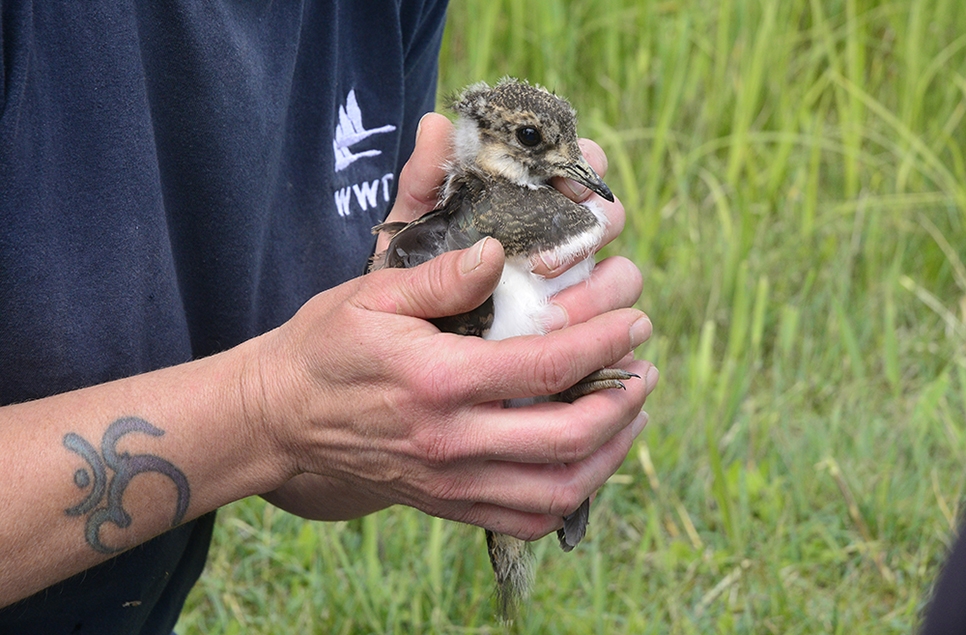
Staff ringing a young lapwing a few years ago.
Glow, little glow-worm, glow
Reserve staff often find the female glow-worms around the plants on the edges of the car park throughout the summer months, when the team pops in for evening bat surveys. Glow-worms are actually beetles, but the females are flightless and appear much the same as the larvae. The females climb up stems, then emit a green light from their abdomen to attract a mate. Hatching larvae feed on slugs and snails for up to three years before becoming adults. Bio-luminescent glow-worms can emit light during all stages of life (including the egg!), but it is really the adult females who steal the show!
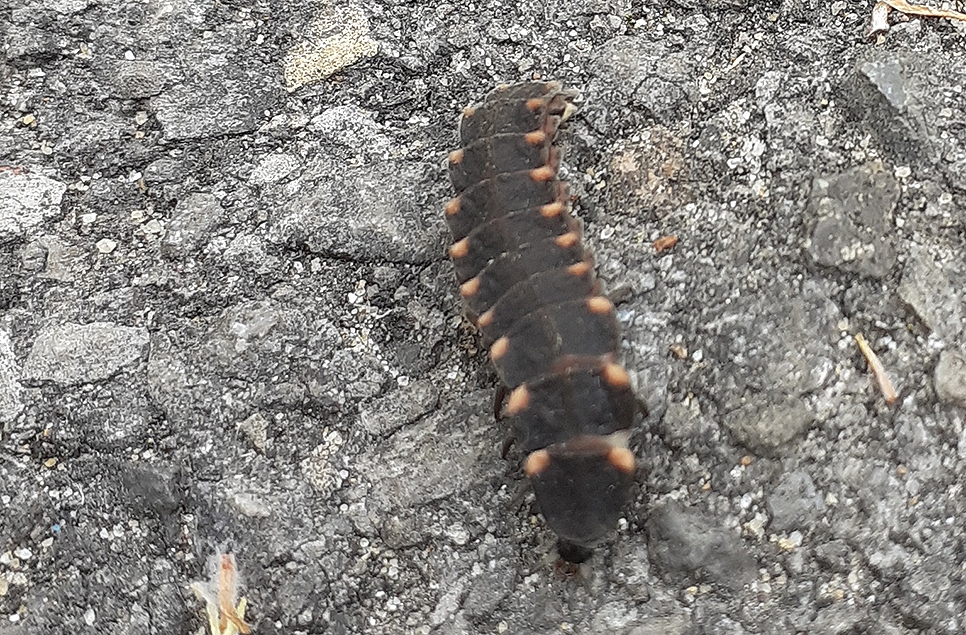
Glow-worm larve found in the car park at Arundel Wetland Centre.
Swirls of Sand martins
Good numbers of sand martins are here most days with c30 birds whizzing around the arms of the nest bank at the Sand Martin hide. The number of martins will increase as more chicks emerge from the nest holes to fledge. The sand martins will remain here until late August- early September when they begin their migration south to Africa.
On the cobble islands around the Sand martin hide look out for chicks fledging on the black-headed gull mini-colony.
Ready to visit and see what's wild for yourself?
Be inspired by and connect with wetland wildlife this season. Book your visit online and save time at the till, click below.
